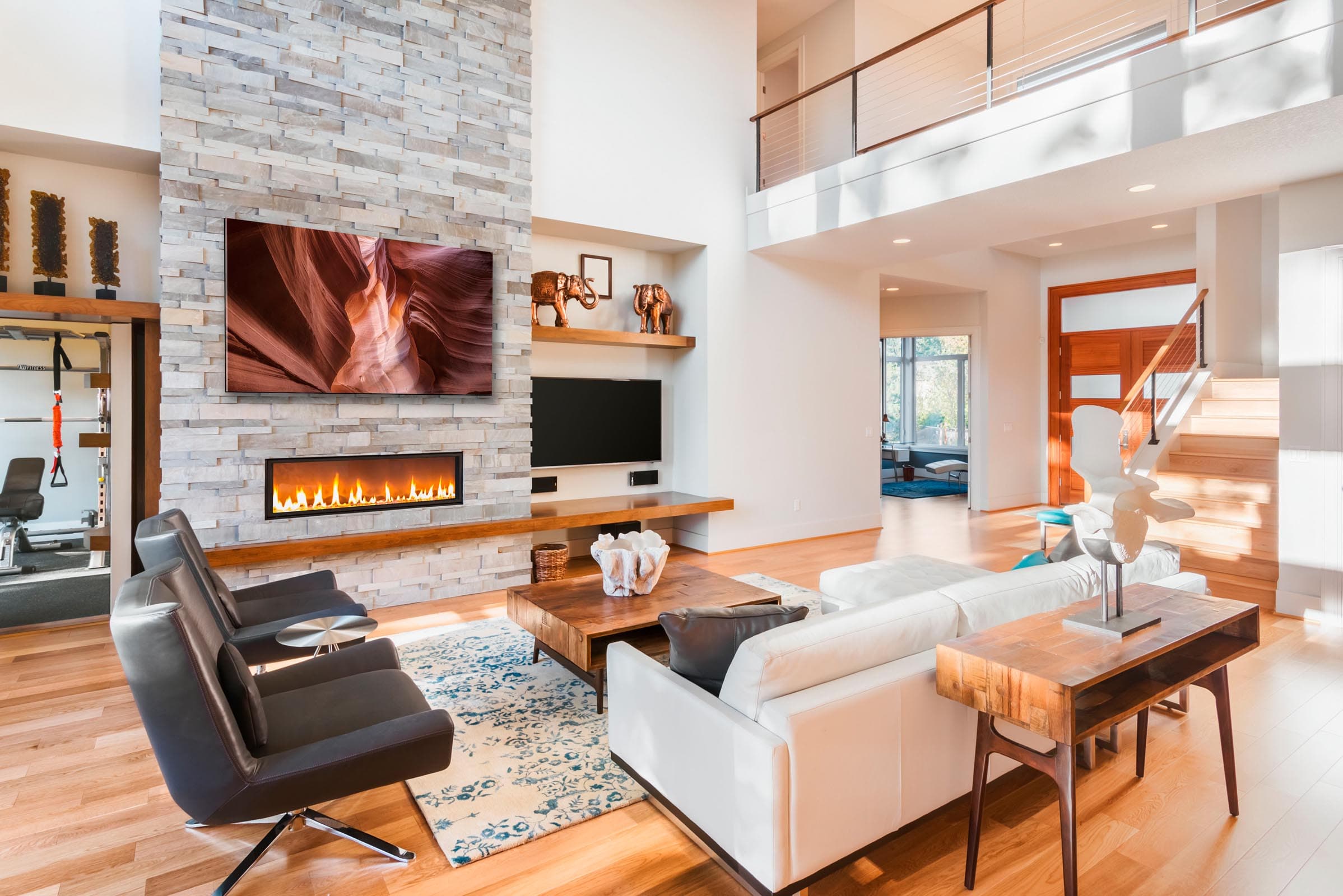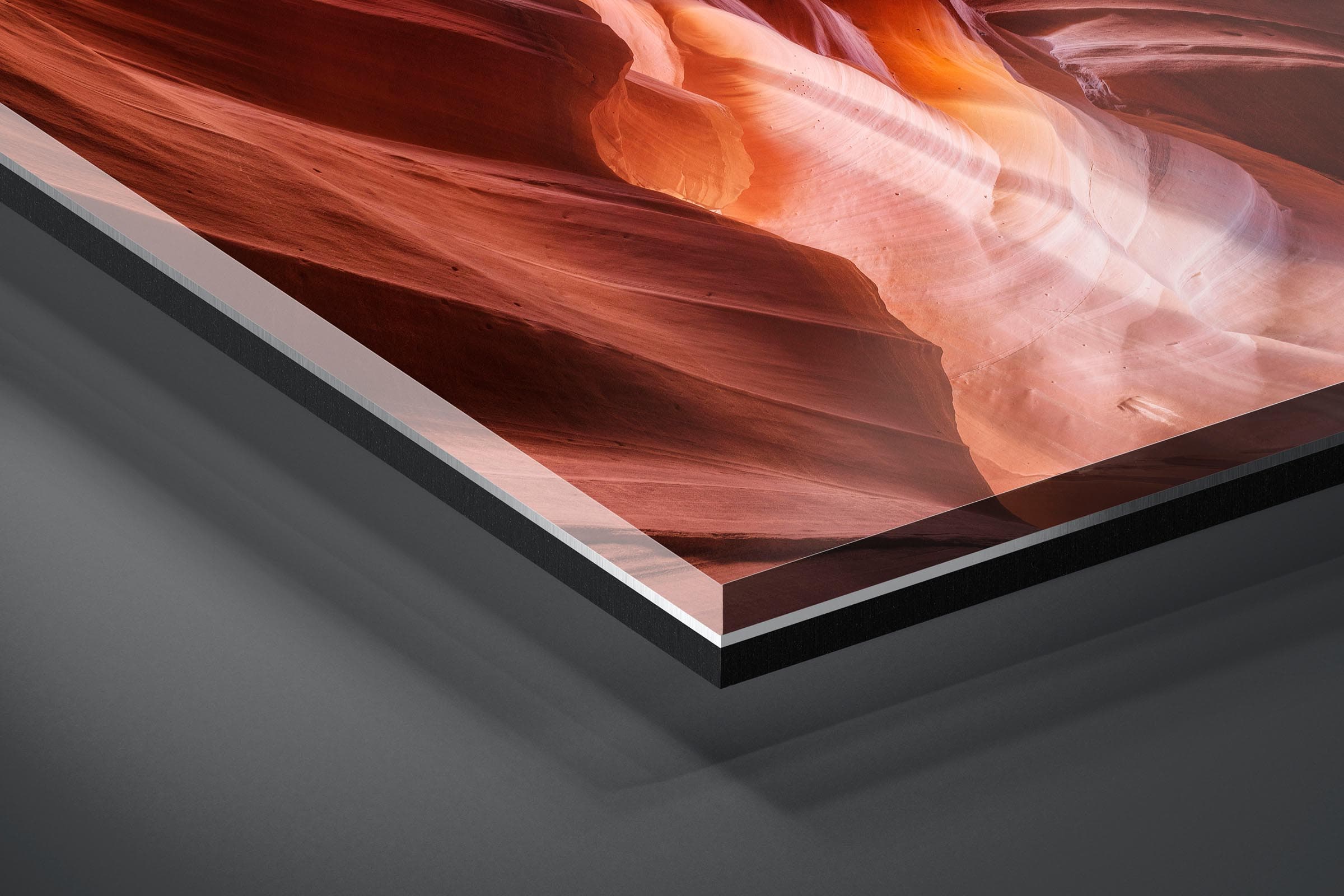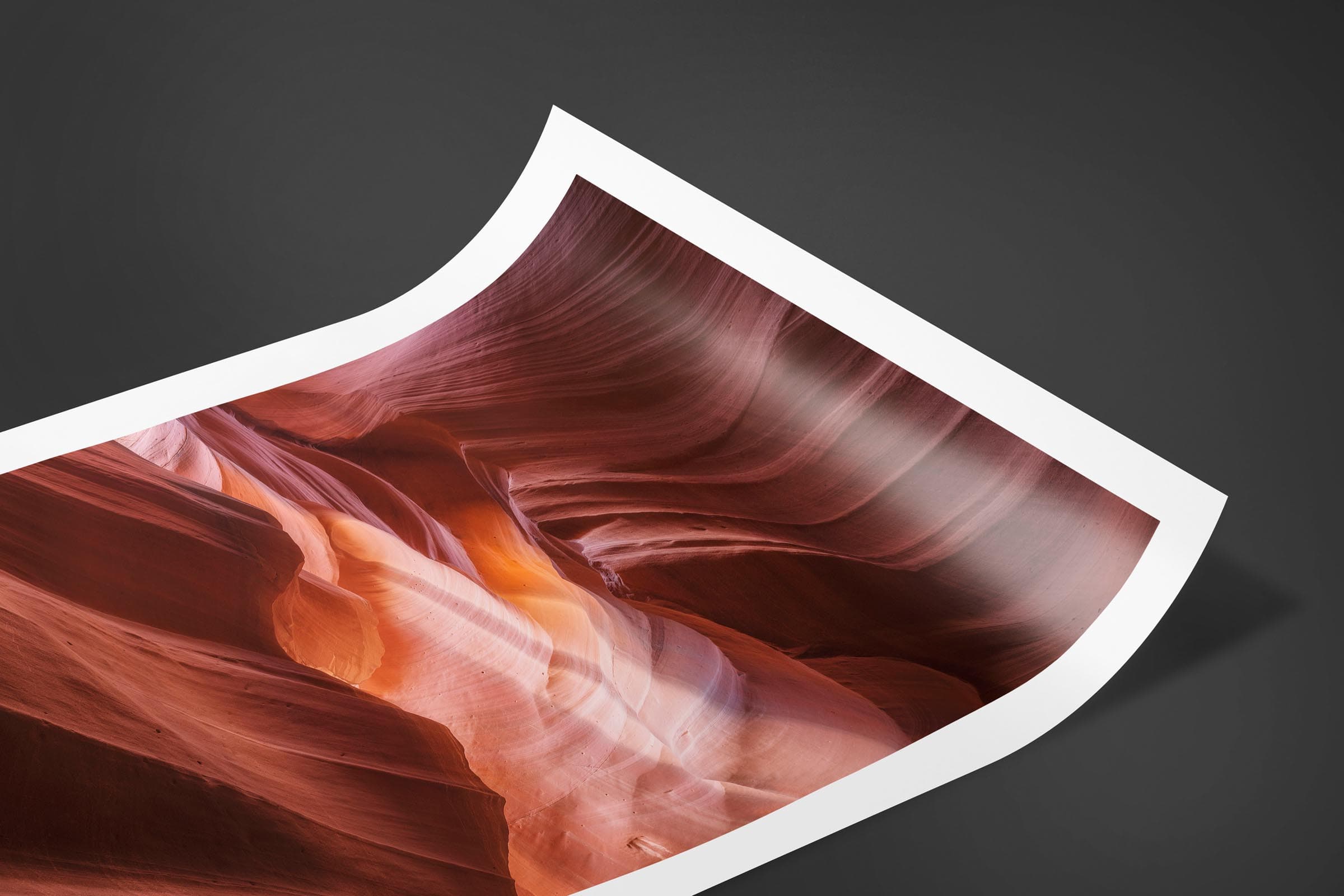
Swirl
Fine Art Photography Print
In Page, Arizona, on Navajo Nation land, you can find “slot canyons”, which are made of sandstone formed by wind and rains over millions of years. As you wander through the narrow passageways, you notice the incredible features and what seems like movements in the walls, making you feel like they are alive.
$375.00
FREE shipping on all US orders. Please allow 4-5 weeks for production and delivery.

Print Options
We currently offer two limited edition print options at Brent Goldman Photography to display the artwork in a modern, striking manner: FujiFlex Crystal Archival paper and Gallery Acrylic. The main difference between the two is that the Gallery Acrylic option is frameless and ready-to-hang, while the FujiFlex paper will require matting and framing. Both options will be signed and numbered with the edition and will ship for free in the US.

Gallery Acrylic
The photograph is first printed on brilliant FujiFlex Crystal archival paper, then face mounted to 1/4-inch acrylic glass, and finally encapsulated by a 1/8-inch durable backing to provide stability. A rear floating frame is included so the print will be ready-to-hang upon arrival.
FujiFlex prints surpass other printing paper bringing unbelievable resolution, clarity, and vibrancy. Acrylic glass allows the light to bounce through the surface which provides an amazing near 3-D glowing effect, making the image come alive. Combined, you have the ultimate viewing experience.
Please note that the acrylic image displayed may not appear scaled correctly. See main product image above for correct scaling.
Selecting the Right Print Size for your Room
Below are a few useful tips to help determine the right print size for your room. One of the most common mistakes is selecting a print that is too small which can look awkward against a white surrounding space. If you have any questions about what print size to order or which print would look best in your room, I would be happy to help. Using images of your room, I can create a visual mock-up that displays the your chosen artwork. See Contact page for more information.
Hanging Art Above Furniture
Artwork is commonly placed above furniture or a fireplace mantel. A good guideline is for the artwork to be around three-fourths the width of the furniture. For example, if your couch is 80 inches wide, then the artwork should be around 60 inches wide.
Hanging Art on an Open Wall
If you do not have any furniture near your wall, then you will want a piece of artwork that takes up to two-thirds to three-fourths of the width of the wall. For example, if your wall is 60 inches wide, then the artwork should be between 40 to 45 inches wide. Instead of having one piece of artwork fill a large open space, consider two or three pieces of artwork that form a collection or series.
How High to Hang Art
Artwork should hang six to twelve inches above furniture and three to six inches above mantels. This will lead to a nice balance between the art and furniture without feeling too crowded. In the case of a short piece of furniture, like the sideboard below, hang the artwork so the center is64 inches above the floor level. This will allow an average-height person to be eye level with the center of the artwork.

How to Care for Your Artwork
After receiving your artwork, there are a few steps you should take to ensure the longevity and preservation of your purchase for years to come.
Avoid Direct Sunlight
Sunlight contains Ultraviolet (UV) waves which can fade and yellow your artwork over time. Our acrylic prints have UV filtering which filter out 95 percent of the UV rays. Even so, it is best to avoid hanging your artwork where direct sunlight will contact it. In addition to sunlight, temperature fluctuations will cause the art materials to expand and contract. This can breakdown the paper pigments and warp both acrylic and wood surfaces. Temperature should be controlled below 77 degrees F.
Humidity
It is important to control the humidity levels in the room where the artwork is being displayed. Museums keep their artwork at 55 percent relative humidity. Mold growth can occur when relative humidity levels exceed 70 percent. Organic materials, such as paper, acrylic, and wood, are hygroscopic - meaning they can absorb and give off moisture. Fluctuations in humidity cause the materials to swell and shrink. It is recommended to keep the relative humidity fluctuations less than 5 percent. Each material responds differently to the humidity changes which can lead to dimensional changes such as bowing, cracking, and warping. Our acrylic prints have the paper face-mounted to the acrylic and humidity fluctuations can introduce tension between the surfaces leading to damage. If you are unsure what the relative humidity levels are in your home, you can purchase an inexpensive thermohygrometer which will provide the temperature and humidity amount and show daily averages.
Cleaning
You should always use a soft microfiber cloth to clean your artwork. Moisten the cloth with a little water to remove the dirt. Avoid using paper towels because they can easily scratch the acrylic surface. Also avoid any alcohol-basedand ammonia-based cleaners as they can damage the acrylic surface and cause a cloudy appearance.
Still have a question? Read the FAQ.

